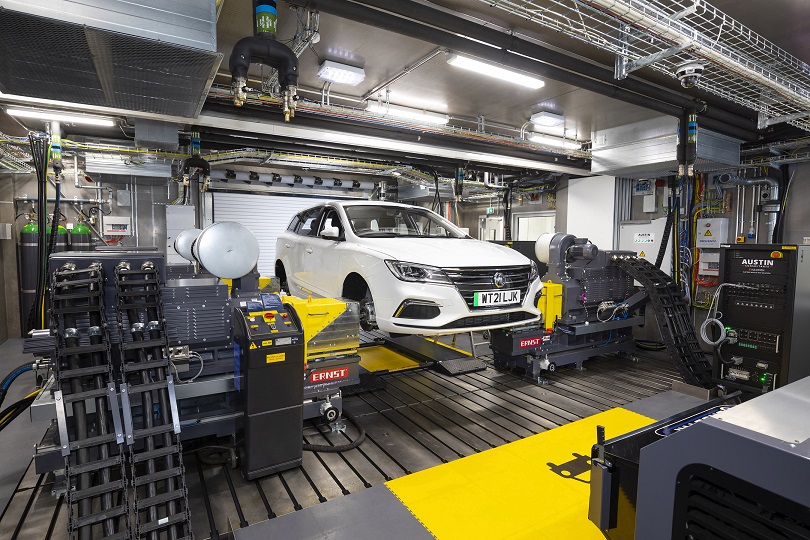EV test specialist relies on power analyser to gain in-depth insight into power train performance
Electric vehicle (EV) manufacturers are constantly pushing the boundaries of performance and the technology needs to demonstrate high efficiency, maximum range between charges, reliability and high dynamic performance.
By showing that EVs can offer the same advantages and specification that conventional vehicles can, manufacturers can secure the future of a technology that is a major building block of a more sustainable society.
At its EV Testing Centre in Milton Keynes, Intertek plays a crucial role in the industry’s efforts to develop new generations of technology, for road going vehicles and for Formula E racing cars. Its work can include tests of electric racing vehicles which can accelerate from 0 to 100km/h in 2.8s and reach a top speed of 280km/h.
To meet the demands of its testing regime, Intertek needs measurement tools that can achieve three requirements. They need to be able to measure motors rotating at very high speeds; be easy to use and so ensure maximum productivity for testing staff; and allow rapid integration with Intertek’s LabVIEW test platform.
Precision Power Analyser
The instrument chosen by Intertek is the Yokogawa WT5000 Precision Power Analyser. Its high resolution, 10.1” display enables split screen viewing of up to eighteen waveforms and can display up to 12 pages of various measurement parameters, making it ideal for efficiency tests of inverter-driven motors and electric vehicles.
Intertek uses its WT5000 to achieve traceable measurement of high-speed power signals. Particular needs include the measurement of high-speed motors rotating at up to 27,000rpm, enabled by the unit’s maximum sampling rate of 10 MS/s. Intertek’s WT5000 units also perform high-frequency harmonic analysis up to the 500th order, providing side-by-side comparison of harmonics from two different input sources.
Full traceability of these measurements is ensured by calibration of the WT5000s conducted at Yokogawa’s ISO/IEC17025-accredited (RvA K164) European Standards Laboratory in Amersfoort, The Netherlands.
The WT5000 provides ease of use and high productivity, notably the ability of the instrument to perform complex efficiency calculations. Intertek test engineer Raju Rajaneethan says: “The efficiency map calculations in the WT5000 save us a lot of time. We now go directly from the torque transducer straight to the Yokogawa unit, and both speed and torque measurements are read directly from the WT5000. Previously we would have done these calculations for efficiency manually. This is a huge boost to the team’s productivity.”
Test Cell Integration
The WT5000 also brings easy integration into test cells, which are continually reconfigured for new customer applications. A WT5000 plug-in for Intertek’s LabVIEW platform allows easy integration into the data acquisition and control system.
With a guaranteed accuracy of ±0.03%, harmonic comparisons up to the 500th order, and custom computations, the WT5000 produces multi-channel measurements. It is also extremely versatile, featuring seven slots for user-swappable input elements, diverse mainframe options, and simultaneous evaluation of up to four motors. This enables the user to expand or reconfigure the instrument as applications and needs change, while raw data can also be streamed to a PC for detailed analysis.
With a full touchscreen, supported by hardware hotkeys and powerful software for remote measurements, the WT5000 makes connecting, configuring, and measuring power easier than ever.
The features and performance of the WT5000 are also backed up by Yokogawa’s customer service representatives based in the UK.
- UK manufacturing steps up to COVID-19 crisis - April 2, 2020
- Clustering Innovation - March 12, 2020
- A Global Monitor - March 6, 2020

